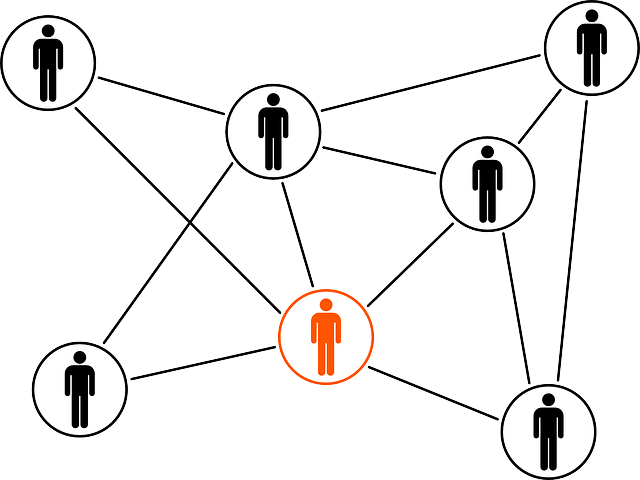IS WEBSITE A PRIMARY SOURCE?
A website is a primary source if it contains original ideas, direct research, or first-hand evidence about an event, object, person, or work of art. This can exist in the form of published blog posts, articles, interviews and surveys, public opinion polls, original designs, and photographs.
A website is a secondary source if it evaluates, analyzes, interprets, summarizes and processes primary sources.
Like primary sources, secondary sources can also exist in the form of blog posts, review articles, maps, charts, interviews, official records, images, polls and public opinion data.

Understanding Primary and Secondary Sources
Primary sources are records of events or evidence as they are first described or actually happened without any interpretation or commentary.
It is information that is shown for the first time or original materials on which other research is based.
Primary sources are immediate, first-hand accounts of a topic, from people who had a direct connection with it.
Examples of primary source include:
- Raw statistical data
- Official documents and records
- Personal communications (e.g. letters, interviews)
- Letters
- Manuscripts
- Diaries
- Audio or video recordings
- Born-digital items (e.g. emails)
- Objects or artifacts (such as works of art or ancient roads, building, tools and weapons)

Secondary sources describe, interpret, comment upon, analyze, evaluate, summarize, and process primary sources. They provide second-hand information and commentary from other researchers.

Examples of secondary sources:
- Bibliographies
- Biographical works
- Reference books, including dictionaries, encyclopedias, and atlases
- Articles from magazines, journals, and newspapers after the event
- Literature reviews and review articles (e.g., movie reviews, book reviews)
- History books and other popular or scholarly books
- Works of criticism and interpretation
- Commentaries and treatises
- Textbooks
- Indexes and abstracts
What are Primary Source Websites?
As the name implies, primary source websites are reference websites that contains originally published contents, reports and findings.
They serve as a large database of archives and they give direct access to the subject of your research.
Personal blogs can be called a primary source website if it contains personal happenings, results from experiments or findings of the writer.
9 Examples of Primary Source Websites
| WEBSITES | DESCRIPTION |
|---|---|
| Archive Grid | ArchiveGrid includes over 7 million records describing archival materials, bringing together information about historical documents, personal papers, family histories, and more. |
| Trans-Atlantic Slave Trade Database | Information on almost 36,000 slaving voyages that forcibly embarked over 10 million Africans for transport to the Americas between the sixteenth and nineteenth centuries. |
| Landmark Supreme Court Cases | It covers landmark Supreme Court cases including a full range of resources and activities to support the teaching and learning of landmark Supreme Court cases. |
| Smithsonian Institution Libraries | The digital collections include over 27,000 digitized books and manuscripts as well as photo and illustration collections, seed catalogs, trade literature, and much more. |
| Europeana Pro | Europeana Pro contains “57,642,199 artworks, artefacts, books, films and music from European museums, galleries, libraries and archives.” |
| American Presidency Project | Search thousands of documents related to historical and current U.S. presidencies, such as speeches, official papers, executive orders, proclamations, news conferences, and press briefings, videos of debate, radio addresses, etc at UC Santa Babara. |
| OAIster | OAIster is a union catalog that contains records of digital resources from open-archive collections worldwide. |
| Internet Archive | Internet Archive offers permanent access for researchers, historians, scholars, people with disabilities, and the general public to historical collections that exist in digital format. Browse the amazing number of resources; you will spend hours exploring this website. |
| Digital Public Library of America | Discover 42,414,520 images, texts, videos, and sounds from across the United States. |
| WEBSITES | DESCRIPTION |
|---|---|
| Archive Grid | ArchiveGrid includes over 7 million records describing archival materials, bringing together information about historical documents, personal papers, family histories, and more. |
| The Trans-Atlantic Slave Trade Database | Information on almost 36,000 slaving voyages that forcibly embarked over 10 million Africans for transport to the Americas between the sixteenth and nineteenth centuries. |
| Landmark Supreme Court Cases | It covers landmark Supreme Court cases including a full range of resources and activities to support the teaching and learning of landmark Supreme Court cases. |
| Smithsonian Institution Libraries: Digital Collections | The digital collections include over 27,000 digitized books and manuscripts as well as photo and illustration collections, seed catalogs, trade literature, and much more. |
| Europeana Pro | Europeana Pro contains “57,642,199 artworks, artefacts, books, films and music from European museums, galleries, libraries and archives.” |
| American Presidency Project | Search thousands of documents related to historical and current U.S. presidencies, such as speeches, official papers, executive orders, proclamations, news conferences, and press briefings, videos of debate, radio addresses, etc at UC Santa Babara. |
| OAIster | OAIster is a union catalog that contains records of digital resources from open-archive collections worldwide. |
| Internet Archive | Internet Archive offers permanent access for researchers, historians, scholars, people with disabilities, and the general public to historical collections that exist in digital format. Browse the amazing number of resources; you will spend hours exploring this website. |
| Digital Public Library of America | Discover 42,414,520 images, texts, videos, and sounds from across the United States. |

Primary vs Secondary source website: which is preferred?
It depends on the context of usage.
Researchers use both primary and secondary sources.
While producing this article, I consulted both primary and secondary source websites.
Primary source websites are credible as original sources of information. Most times, the information from primary source website are raw data and difficult to comprehend.
Information gotten from secondary source website are much easier to comprehend but lacks research originality.
How to identify a primary source website
There are 5 ways to tell if a website is a primary source.
- Take a look at the domain extension.
Domain extensions are the suffixes at the end of a domain name. They are also known as TLDs (top-level domains).
For example in “websitehurdles.com”, the domain extension is “.com”
Different domain extensions have different meanings.
For example:
.COM is used for commercial websites e.g AFRILCATE.COM (a high-end reference learning website)
.ORG is used for organizational websites e.g UNICEF.ORG (a U.N organization that advocates for the protection of children’s rights all over the world).
.NET is used for internet, database or networking-based websites e.g BEHANCE.NET (a network of artists and designers).
.GOV is a restricted domain extension and used only by governmental entities. eg. USA.GOV (The official website of the United States government).
.EDU is used by post-secondary educational institutions eg. HARVARD.EDU (Harvard University education website.
.INT is used by international organizations established by treaty eg. AU.INT (African Union website)
.edu/, .gov/, .org/, and .int/ are mostly primary sources with a very high level of credibility.
- Check if the website has a known relevance or authority on the given subject under consideration.
- Analyze the expertise of the writer. Is the person/organization known for publishing original contents in the subject field? For example, Brain Dean of Backlinko is known for publishing original research and high quality content centered around SEO.His contents are mostly primary source obtained from extensive user-generated research.
- Try to understand the nature of the content. Is the article centered upon personal life experience or an internal case study/self-review of the writer or organization? If yes, then it’s a primary source.
- Most importantly, check if the article has external links or references.
This can be found either at the end of the article or in between the writeup via tags like: “read more”, “sources”, or tiny numbering.
External links serve as pointers to websites or articles where the information was originally gotten from.
If a write-up contains external links, it signifies that the current website is not the primary source of the given information or research.

external links pointing to other writers or websites
Till we meet again on another article,
Happy Coding!
Can a website be both a primary source and a secondary source?
Yes, it’s very possible for a website to be both a primary and secondary source of information.
Commercial websites are generally designed to serve both purposes. It all depends on the type of published article.
I often publish educational content on Afrilcate.com, so permit me to use it as a case study.
In this article: 11 Contact Materials with the Highest Coefficient of Friction
I conducted fresh research from a given sample of data which birthed the results contained in that article, something not found anywhere on the web before the article was published.
Since the results and findings are originally written, it is considered a primary source website.
But in another piece: Coefficient of static friction: The friction coefficient values were not directly measured but obtained from a reference archive.
The Legal Information Institute by Cornell University Law School is known for its large database of primary sources. but it also contains useful secondary materials like the Wex Legal Dictionary/Encyclopedia.
This indicates that websites can serve as both a primary and a secondary source of information.
Support Website Hurdles

Website Hurdles is readers supported.
If you find this content helpful, you can support me by buying me a cup of coffee.
Till we meet again on another article,
Do have a nice day!